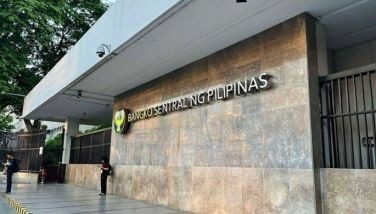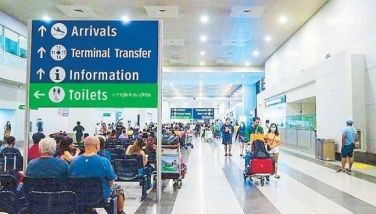MAILBOX: Port of Cebu airs side
MANILA, Philippines - This refers to the column “HIDDEN AGENDA” of Mary Ann Reyes entitled “Another threat from China” which appeared on page B-10 of the Sept. 13, 2012 issue of The Philippine STAR, alleging, among other things, that the government has lost hundreds of millions in potential revenue from the importation of steel products by a certain Joyland Industries Corporation (Joyland) for several years now due to misdeclaration of customs value.
Our records show that Joyland has been a regular importer of what has been described as prime alloy low carbon wire rods in coils and secondary electroplated steel coils, mostly from China. The customs value declared for these shipments has been based on the covering commercial invoices that normally reflect the transacted price for the goods. In 2011, the declared customs value in a similar importation of steel wire rod by Joyland was challenged before the Valuation and Classification Review Committee (VCRC) of the Port of Cebu. The VCRC, after due presentation of evidence, hearing and deliberation, resolved to accept the declared customs value under Method 1 applying the rules on Transaction Value System as mandated by law and the WTO Agreement on Customs Valuation. Said decision, however, was without prejudice to the action to be undertaken by the Post Entry Audit Group (PEAG) of the Bureau of Customs, on the value declarations being made by the importer which at that time was already under post entry audit by the PEAG as directed by the Commissioner of Customs.
In May this year, several shipments of these products were again referred, upon the instance of the handling appraisers, to the VCRC of the Port of Cebu to determine the acceptability of the customs value declaration made by the importer to ensure that the same value declaration undergoes ample scrutiny despite the previous VCRC 2011 decision on the matter.
The appraiser-initiated review was occasioned principally by the complaint from the same local steel industry group, which has been claiming that the value declared by Joyland for the specific steel products imported is lower compared with reference prices of steel products listed in some metal publication.
The current shipments of Joyland are due for resolution by the VCRC after completing its own hearings, presentation of evidence, and deliberations on the matter.
The column has made several assumptions or insinuations, which need to be clarified or altogether rectified either for being baseless, inaccurate or totally incorrect.
1. The May shipments referred to in her column are still the subject of a VCRC deliberation and therefore the Port of Cebu has not yet been convinced that the value declaration is true as the column erroneously assumed. The value declaration will be as it is being subject to the same mode of disposing valuation disputes as provided for in the valuation law. There is, therefore, no factual basis to put the named district collector to task of having to explain as if some wrongdoing has been done. At the very least, this constitutes a reckless exercise of press freedom at the expense of hapless public officials who find themselves at the receiving end of such imprudence.
2. The column says that the application of the transaction value method seems to be a convenient way for customs authorities from performing due diligence, allowing in the process companies like Joyland to engage in obvious technical smuggling through undervaluation of imports and misdeclaration of products. Without obviously understanding how the transaction value system works, and uninformed about the discussions in the previous VCRC decision, the column erroneously assumes that the higher reference price, say, in the metal publication, should be used as the primary basis to value the steel products of Joyland. Under the transaction value system, the existence of reference price, which happens to be higher than the value of an imported commodity being assessed, only serves as ground to raise doubt as to the acceptability of the value declared by the importer using Method 1 of the Transaction Value System. It cannot be used as a substitute value instantly just because it is higher. That is what the law mandates. When doubt exists the mechanism to resolve such disputes is the VCRC existing at every port of entry. The VCRC should go through the process of determining whether the declaration under Method 1 has complied with the elements and conditions of Method 1. This is what the VCRC is currently doing on the May shipments adverted to in the column. It is only when any of these conditions or elements is found not to have been complied with that customs is allowed to reject the declaration under Method 1 (principally using the covering commercial invoice) and move to the alternate methods of customs valuation. It is only then that any available reference price may qualify as the substitute transaction value.
3. Until such time that such a determination has been made, there would be no valid basis to make any conclusion of inapplicable declaration under Method 1, much less of undervaluation or technical smuggling as the column incorrectly did. Technical smuggling or undervaluation is a conclusion of law which is premised on a finding of fact. The column cannot make such a conclusion without establishing any factual basis unless it wants to pre-empt customs in making that finding of fact.
4. In using a reference price, such as the Weekly Metal Bulletin, to raise doubt on the acceptability of value declaration using the invoice (as representing the agreed price for the goods), there is even first a need to establish comparability between the article being assessed and that covered by the reference price, not only in terms of goods description but also in terms of such variables as level of sale, volume, goodwill, price elasticity, terms of payment, and the like, which all impact on the price actually arrived at. For this reason, not all reference prices can even serve as an effective basis to make any comparison and therefore cannot even work to raise a declaration doubt. Again, all these are being looked into in the pending VCRC dispute for the May shipments of Joyland as it was in the 2011 decision.
5. Under the Transaction Value system, the customs value is the price paid or payable for the imported goods. This means the price agreed upon between the buyer (importer) and the seller (exporter) is what customs should use to assess the goods unless there is basis to reject the declaration and move to the alternate method of valuation to determine what the customs value should be. Customs cannot arbitrarily apply any reference price as what the column seems to want customs to do just because the reference price for steel products, assuming her figures are accurate, is higher than what was declared. The VCRC is precisely making sure that it can find a basis to reject the invoice declaration before it can consider the alternative method of valuation under which a reference price may qualify. The fact that a higher value exists, assuming it is comparable with the article being assessed, standing alone, cannot serve as basis to make that rejection. If no such basis is found, then VCRC has no choice but to accept the declaration under Method 1 as what it did in the 2011 case. This customs will do not because it wants to allow companies like Joyland to do technical smuggling, as the column unfairly declares, but because that is what the law ordains. To do otherwise, is to violate the law, which the column wittingly or unwittingly wants us to do.
6. So for the column to castigate customs as a school for fools without the writer apparently having a working knowledge of the technical rules of customs valuation and how they are implemented according to the WTO Customs Valuation Agreement and to our own law adopting the same, is clearly baseless, evidently reckless, and grossly unfair.
7. The column seems to be mouthing the same complaint of the local industry group that wittingly or unwittingly has the effect of prodding customs to act as referee in what appears to be a purely business competition issue. In the looming trade war between the importer and the complaining group, customs cannot take any side but will discharge its functions according to its legal and statutory mandate of determining the correct customs value of any given import on the basis of the facts of the case, evidence, and the applicable laws and regulations.
8. In any event, Joyland is still undergoing customs audit. The PEAG is in the best position to conduct a more thorough study and evaluation of the declarations made by the importer including the evidence submitted. Again, until customs makes a final finding of fact on these declarations, any claim of technical smuggling or undervaluation, or worse, of customs being remiss in its duty, is clearly premature and most unfair.
In the interest of fair play, we hope that your prestigious publication will provide the necessary space for the Port of Cebu to ventilate its position on the issues raised in the column of Ms. Reyes.
Atty. Ronnie C. Silvestre
District Collector
Port of Cebu
- Latest
- Trending





























